The HAMILTON-T1 combines, for the first time, the functionality of a fully-featured intensive care unit ventilator with the compactness and ruggedness required for transport. This is why the HAMILTON-T1 enables you to provide optimal ventilation therapy to all patient groups during transport, from the neonate to the adult. The HAMILTON-T1 provides:
- Approvals and certificates for use in ambulances, helicopters, and airplanes
- Independence from gas cylinders or compressors
- More than 9 hours of battery operating time
- Noninvasive ventilation and integrated high flow oxygen therapy*
- Adult, pediatric, and neonatal ventilation
- Advanced ventilation modes, including ASV® – Adaptive Support Ventilation
The HAMILTON-T1 includes Hamilton Medical’s standardized Ventilation Cockpit user interface and the unique intelligent ventilation mode, Adaptive Support Ventilation® (ASV®).
Unlimited mobility
Approved for all types of transport
The HAMILTON-T1 meets the transport standards EN 794-3 and ISO 10651-3 for emergency and transport ventilators, EN 1789 for ambulances and EN 13718-1 as well as RTCA/DO-160G for aircraft. It reliably accompanies your patients within or outside of the hospital, on the ground, at sea, and in the air.
Independent from compressed air
The integrated high-performance turbine enables the HAMILTON-T1 to be completely independent of compressed air. This reduces weight and saves space since you need neither gas cylinders nor a compressor. This allows even noninvasively ventilated patients to be transported successfully across greater distances.
Lightweight, compact, and sturdy
The compact design and lightweight of the HAMILTON-T1 facilitate ventilator handling. The water-resistant housing offers impact protection and a shock-resistant, anti-reflective display. This makes the HAMILTON-T1 a rugged and reliable companion.
Optimal performance
The correct ventilation mode for your patients
In addition to conventional and modern modes of invasive and noninvasive ventilation, the HAMILTON-T1 also offers the option of an integrated high-flow oxygen therapy mode. Using the same device and breathing circuit, you can change the interface in just a few quick steps and adjust the therapy to meet your patients’ needs best.
This guarantees that your patients receive the same level of ventilation care as at the bedside during transport. In pressure-controlled modes, an optional feature enables conventional speaking valves with the HAMILTON-T1 to be used.
Adaptive synchronization
The IntelliTrig function automatically adjusts the inspiratory and expiratory trigger sensitivity to potential leaks and ensures adaptive synchronization with the patient’s breathing pattern. This is achieved both for invasively and noninvasively ventilated patients.
Oxygen adjustable from 21% to 100%
The finely adjustable oxygen concentration lets you resume the bedside settings one-on-one during transport. The adjustment to 21% even allows you to ventilate your patient with ambient air only.
Hamilton T1 Product overview
- Handle available in different styles
- Patient interfaces and ports
- Press-and-turn knob
- Ventilation Cockpit
- 360° visible alarm lamp
- Worldwide compatible power supply (AC/DC)
- Installation and mounting options (selection)
- Hot-swappable battery
- Transport rack with oxygen cylinder (optional)
More safety and comfort for your patients
Enhanced patient comfort
Every Hamilton Medical ventilator features intelligent ventilation mode ASV (Adaptive Support Ventilation). ASV measures the patient’s lung mechanics and activity on a breath-by-breath basis and automatically adjusts ventilation from intubation to extubation. Since its introduction in 1997, ASV has become well-established in intensive care units and has been shown to improve patient/ventilator interaction.
Lung-protective ventilation
ASV ensures that the patient receives the set minute volume via an optimal breathing pattern, irrespective of the patient’s activity. As part of this process, ASV employs lung-protective strategies to minimize complications from AutoPEEP and volutrauma/barotrauma. ASV also prevents apnea, tachypnea, excessive dead-space ventilation, and huge breaths.
Decreased ventilation time
Clinical studies show that: • ASV supports the earliest possible spontaneous breathing by the patient • ASV shortens the ventilation time in various patient groups
Hamilton T1 FEATURES:
- A fully customizable display featuring waveforms, loops, trends and dynamic lung model
- Ultra-quiet turbine and built-in batteries for freedom from gas and power supplies
- Optimized performance for neonates (optional)
- Touchscreen interface with one-knob operation
- Specifically designed for transport ventilation
- Includes most non-invasive modalities
- Ultra-lightweight, compact design
Include:
- 1- Hamilton T-1 transport ventilator t1
- 10x air filter
- 3x hose set ref: 260257/00 – expired, as sample added for testing purpose




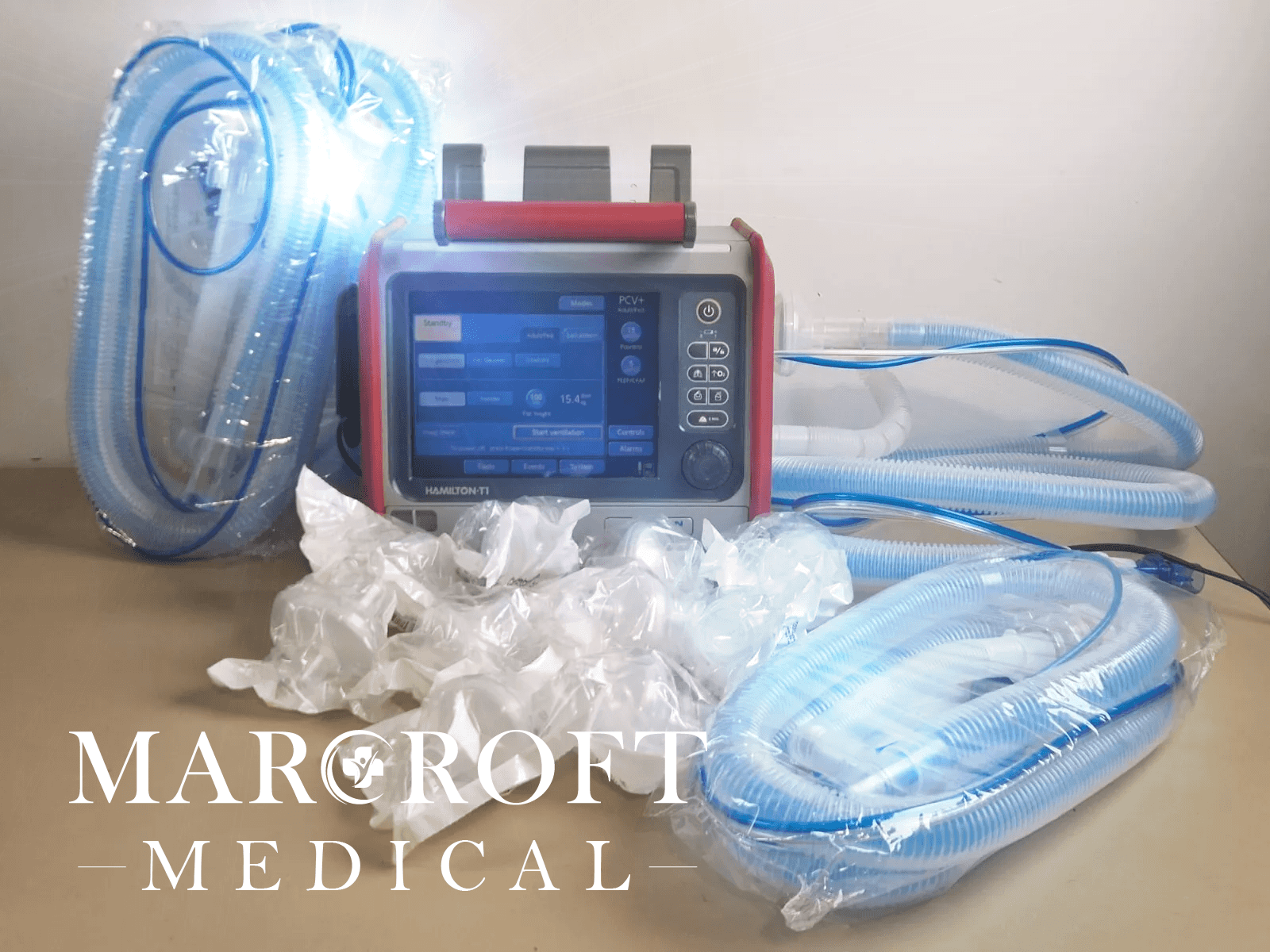
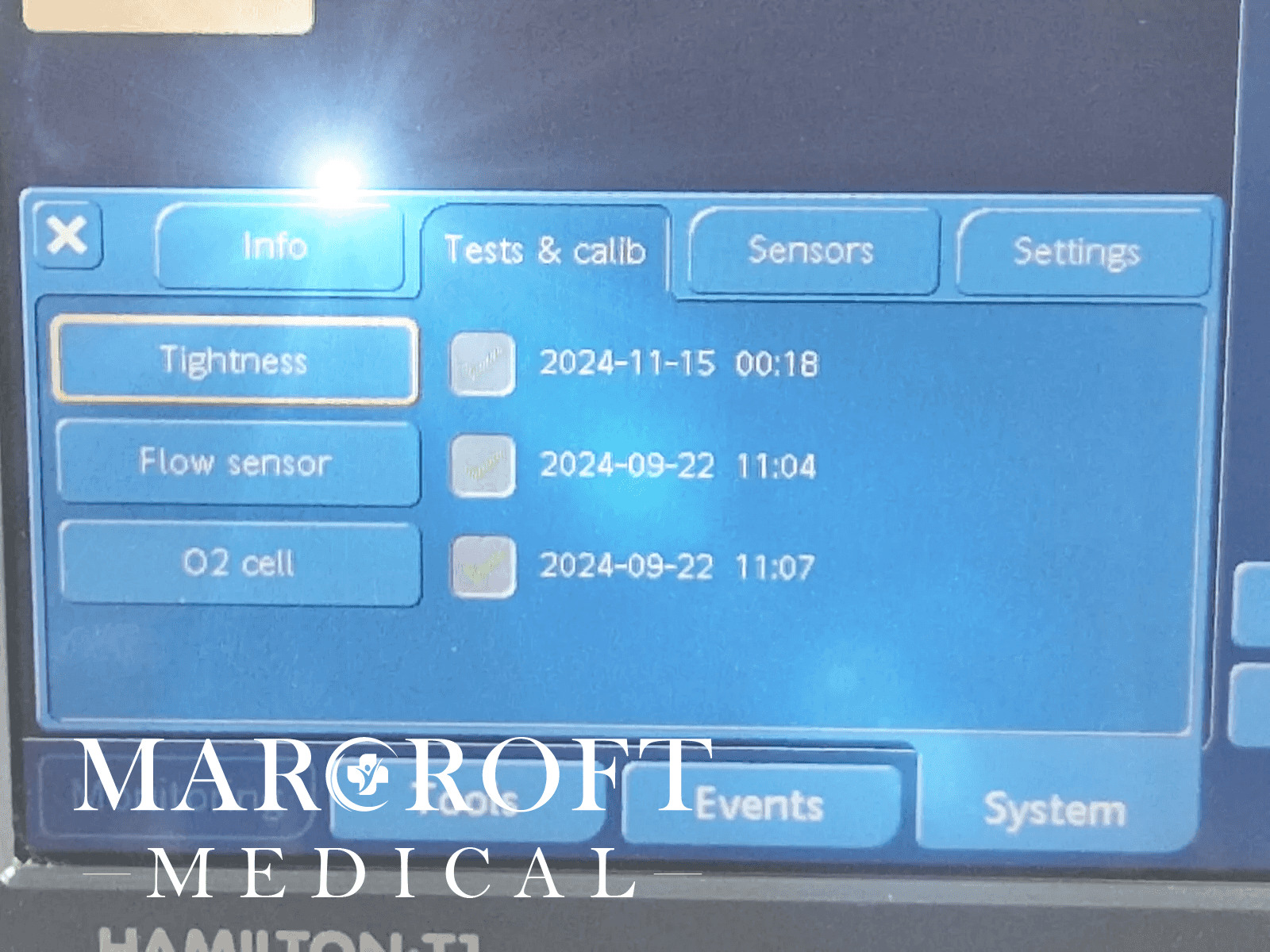
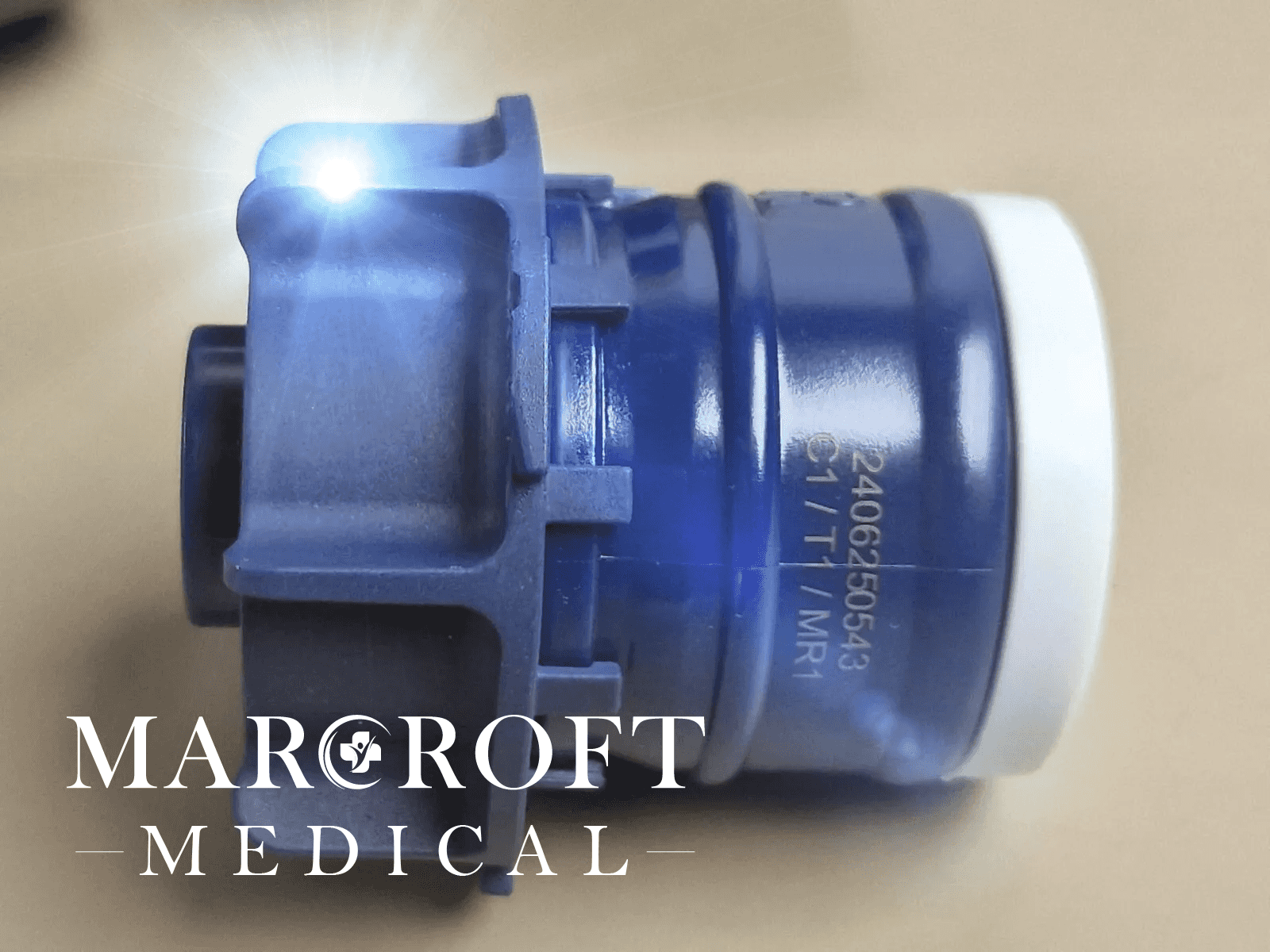
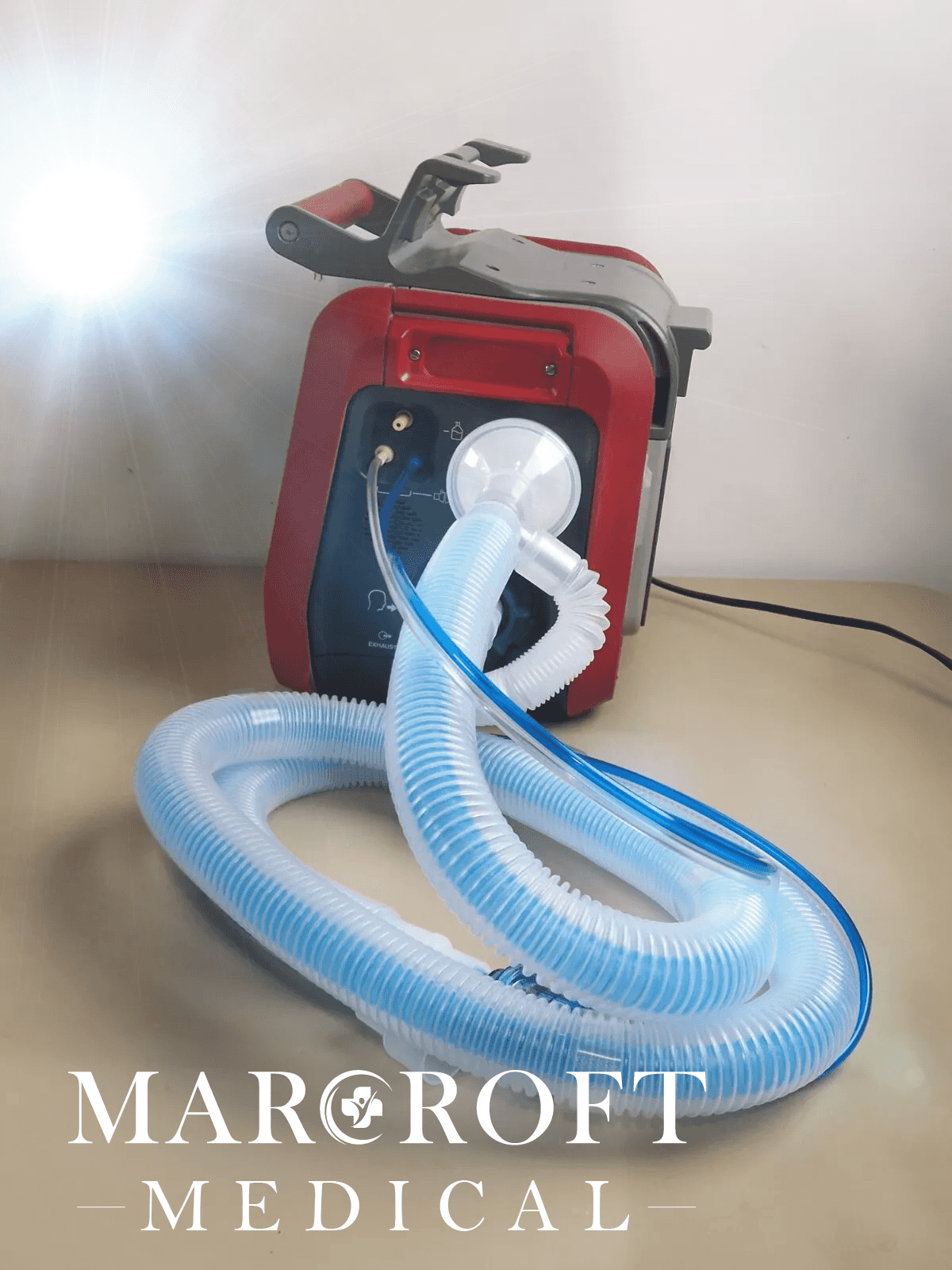
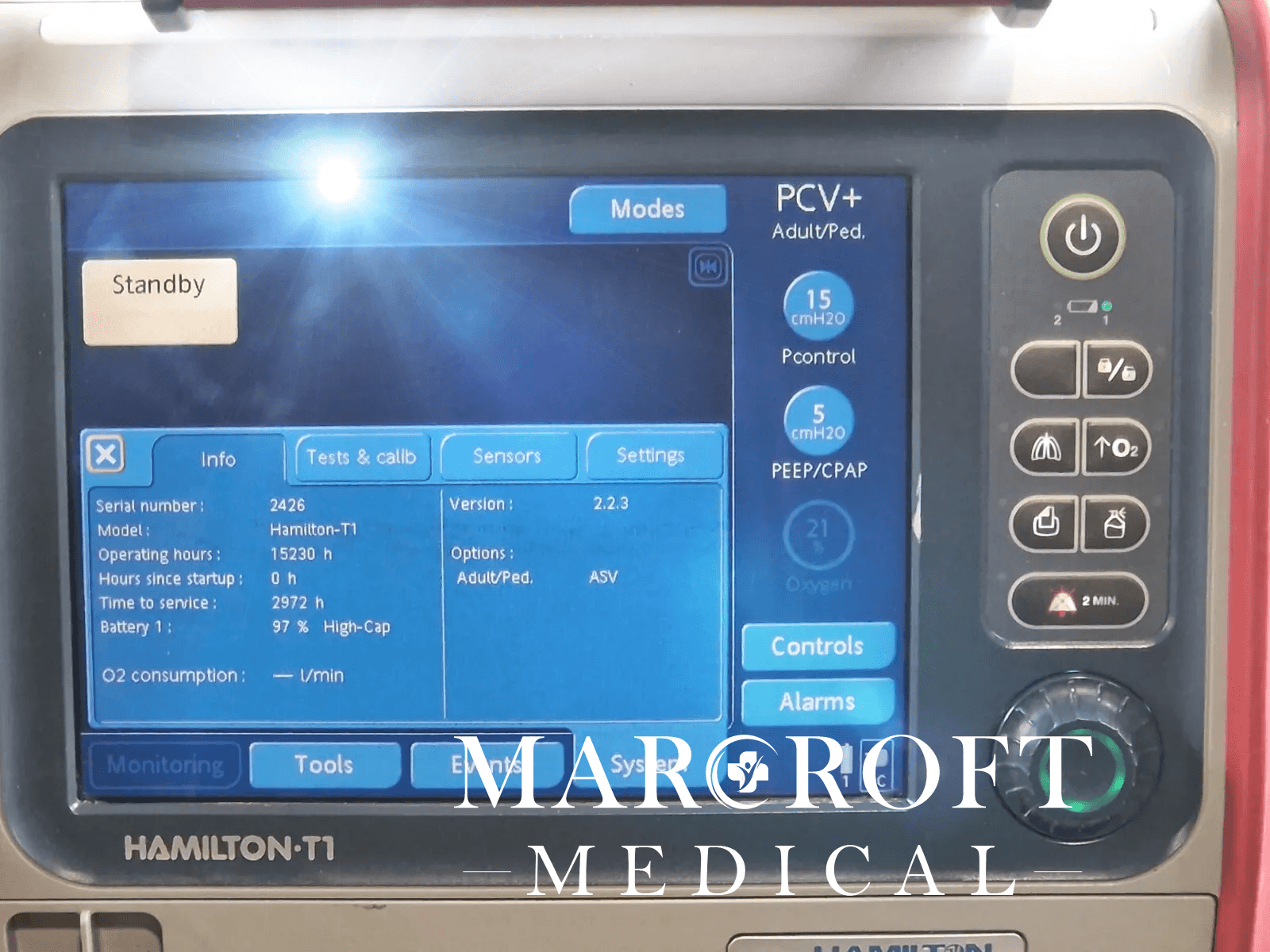
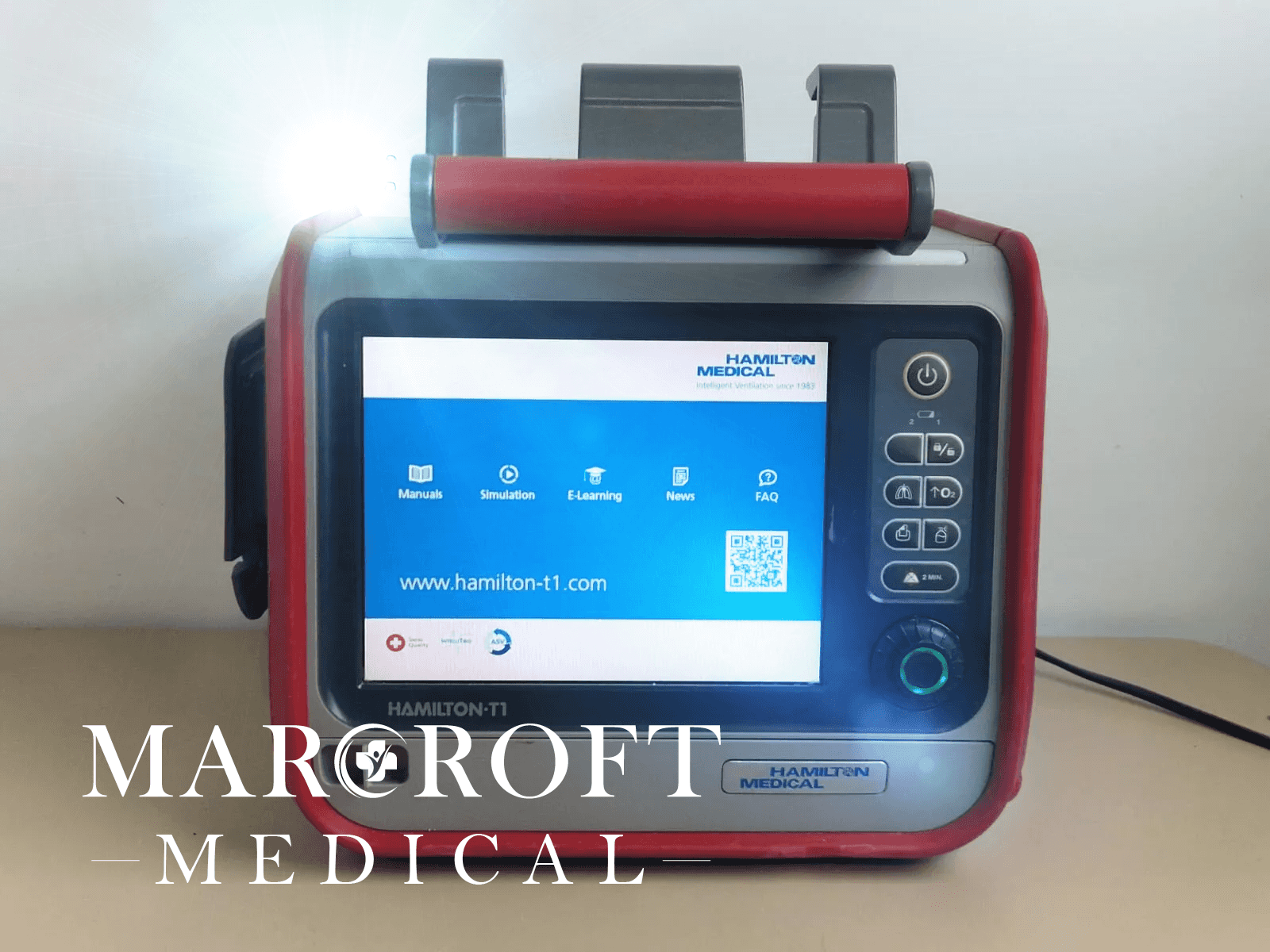
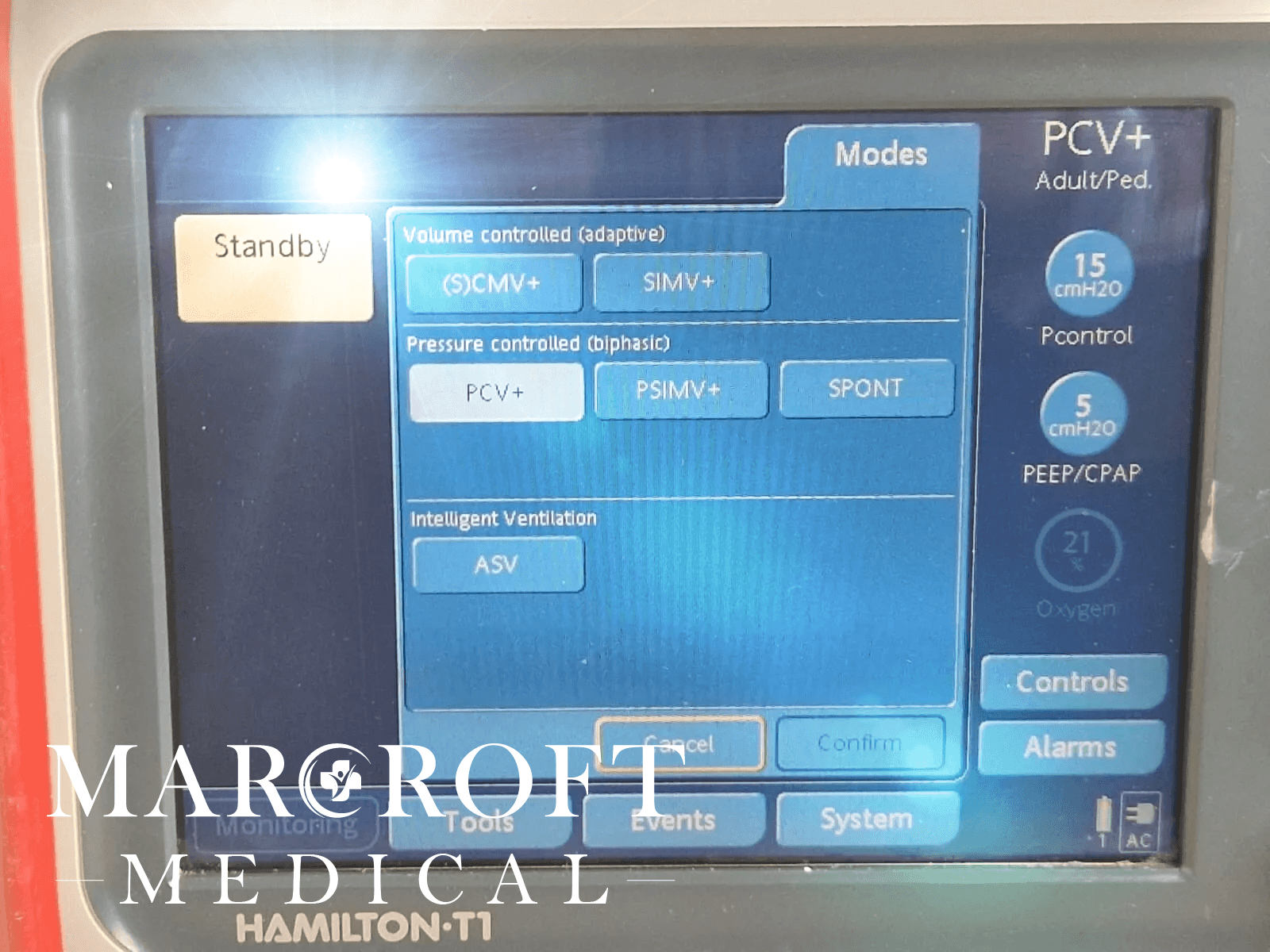

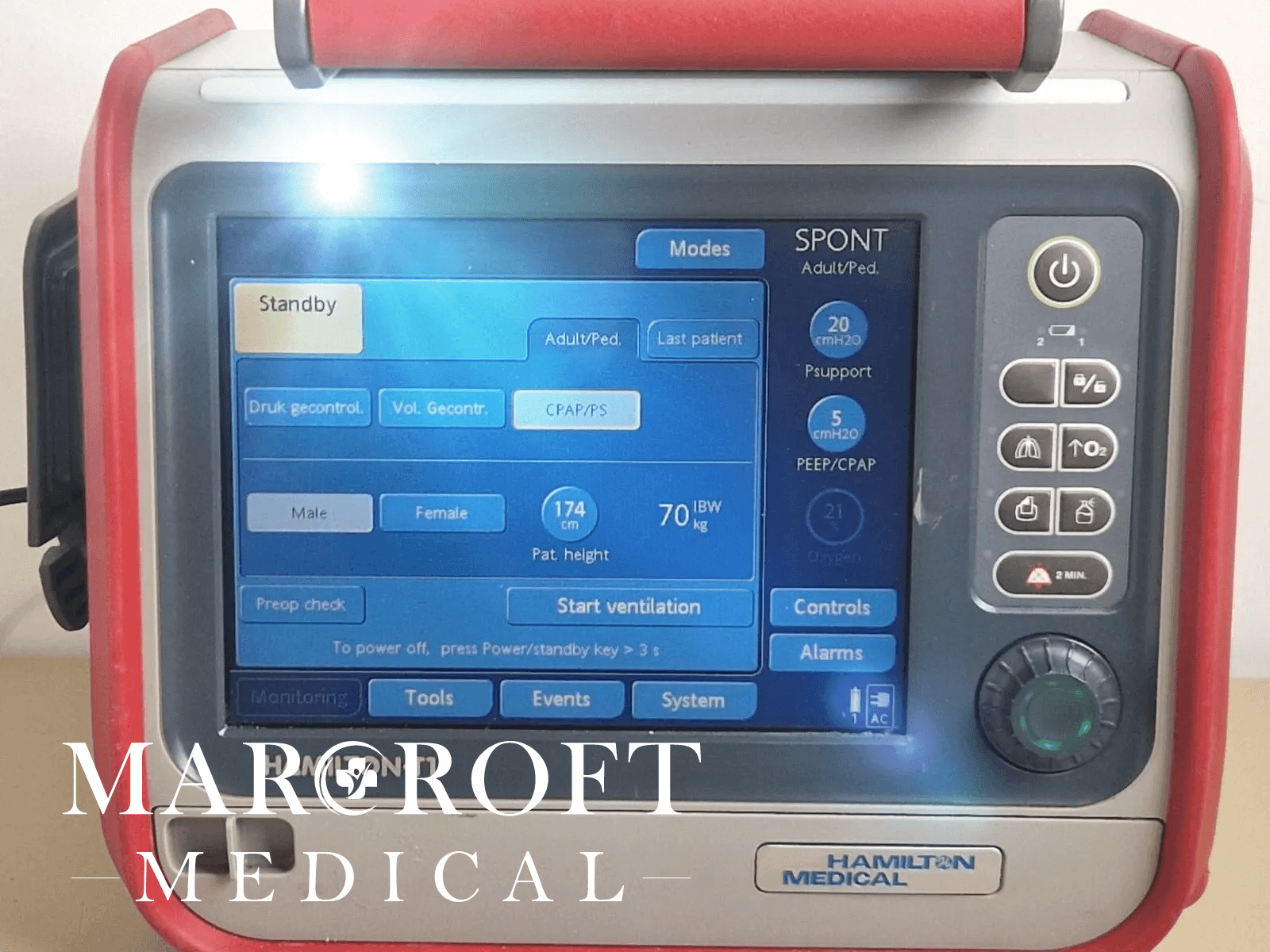


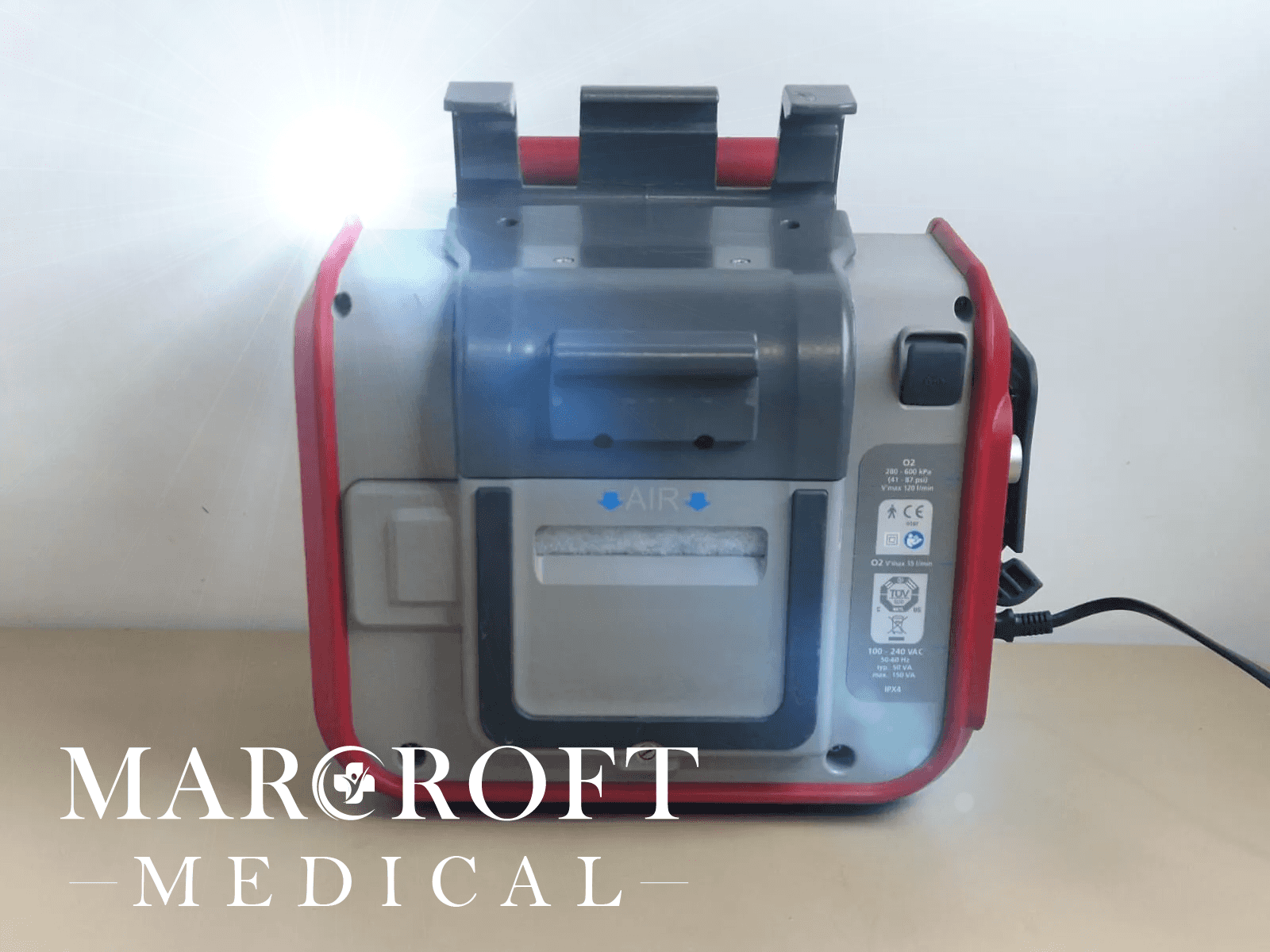
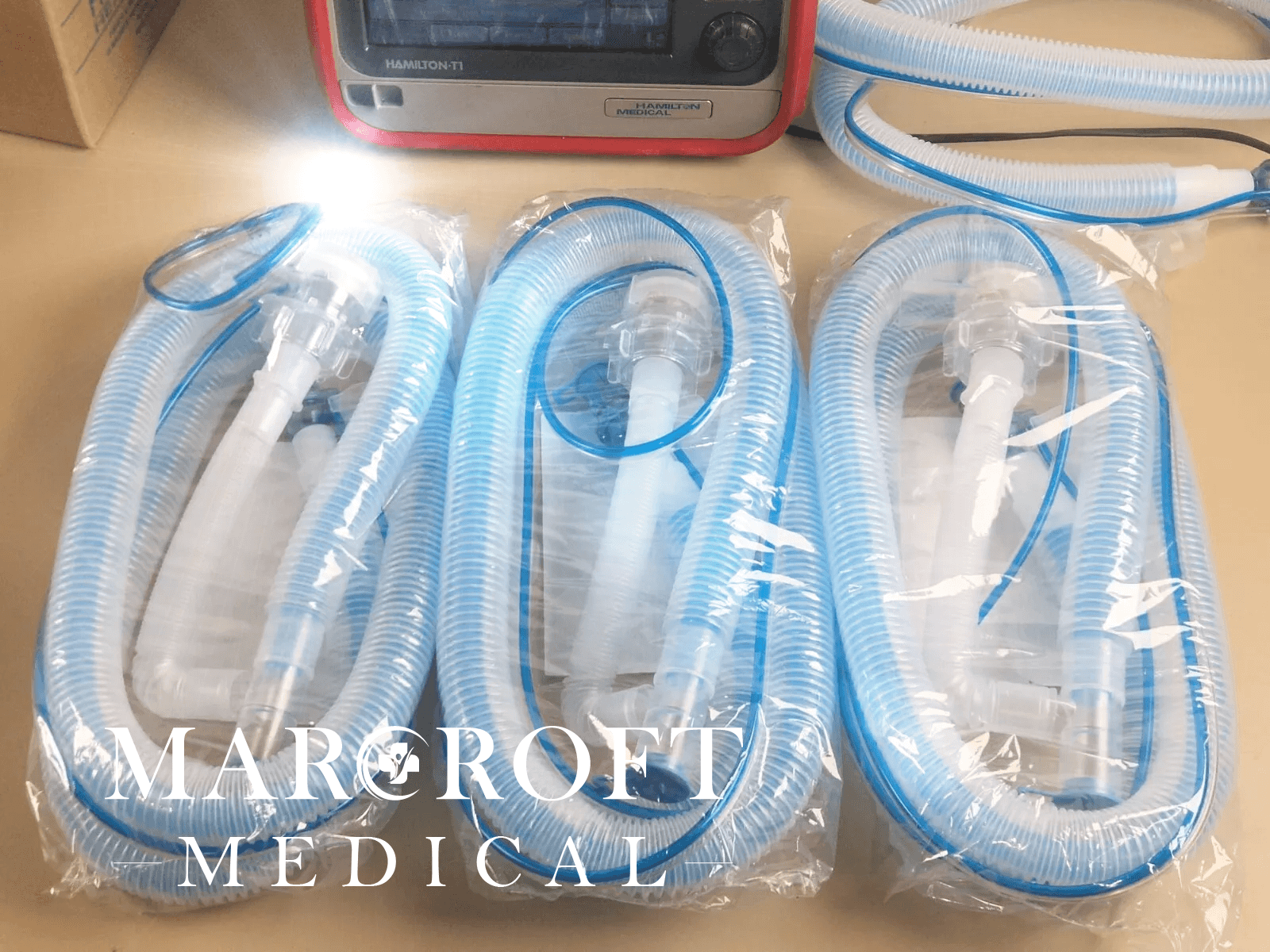
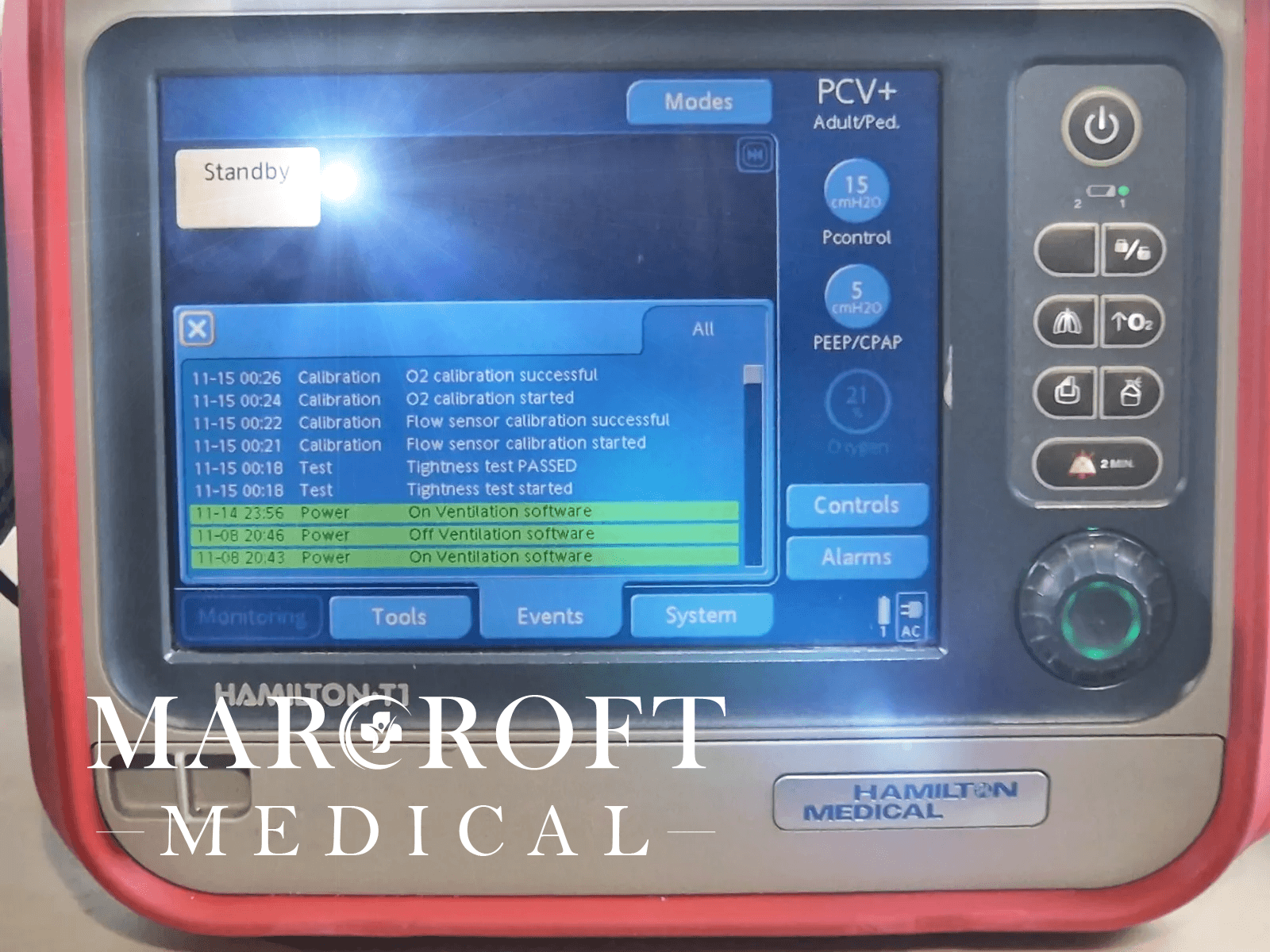


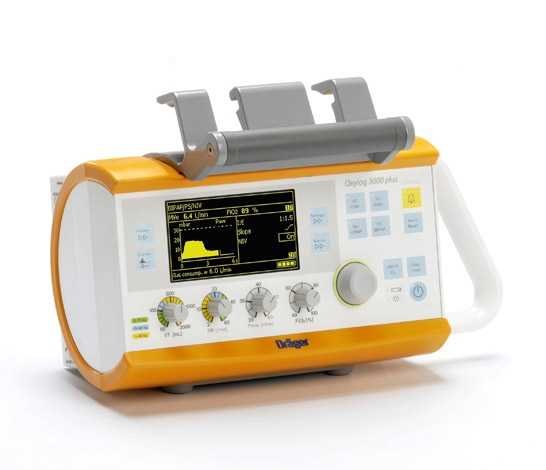
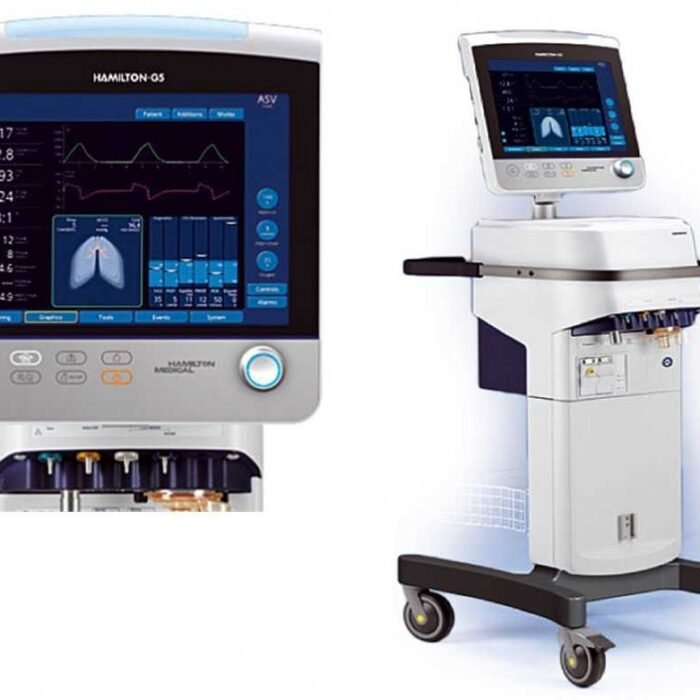
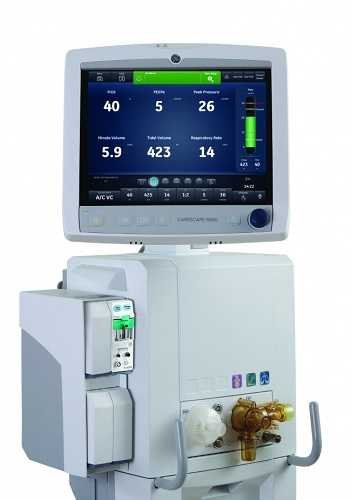

Reviews
There are no reviews yet.